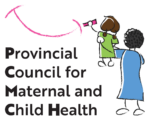
Sept. 2023 | Issue 4
Did you know that one in every 700 children in Ontario is born with a cleft of the lip and/or palate or other craniofacial difference? These conditions can be corrected through surgery, specialized dental treatment and speech therapy.
The Ontario Cleft Lip and Palate/Craniofacial (CLP/C) Dental Program, funded by the Ministry of Health, was established to assist families of children and young adults with a cleft lip and/or palate or other craniofacial difference who must cope with the expense of specialized dental treatment. The program consists of seven regional centres located throughout the province. The Provincial Council for Maternal and Child Health (PCMCH) provides oversight and management of the program, which includes leadership of the CLP/C Operational Advisory Committee through its role as neutral Chair, and by bringing items forward to relevant PCMCH committees, including the Child and Youth Committee.
Specialized dental treatment is one of the many components of care for infants, children and young adults affected with a cleft lip and/or palate or craniofacial condition. In addition to significant dental concerns affecting the tooth and bone structure, Tonia Bryans, Senior Speech-Language Pathologist at the John McGivney Children's Centre in Windsor and a member of the program’s Operational Advisory Committee, indicates “problems with feeding, breathing, hearing, speech, jaw growth and dental development are common.” As a result, a dedicated team of surgeons, dental specialists and allied health professionals work with those affected in order to meet the many, and at times complex, medical, surgical, dental and therapy needs. To address the dental needs, Bryans explains that “a team of dental specialists, including paediatric dentists, orthodontists, oral-maxillofacial surgeons and prosthodontists, work together with surgeons and clinicians to help families navigate through their treatment.”
Dental treatment is essential and helpful in many ways. “Jaw and facial surgeries can improve function and alleviate facial differences associated with their conditions,” explains Dr. Michael Casas, Dentist-in-Chief, Department of Dentistry, Director of the Cleft Lip & Palate/Craniofacial Dental Program at SickKids Hospital, and a member of the program’s Operational Advisory Committee and Chair of the program’s Dental Directors’ Sub-Committee. “For babies with clefts, orthodontic care can start in infancy and continue until the late teen years. Throughout the years of surgery and orthodontics, concurrent preventive dental care is essential to avoid dental decay so that best outcomes are achieved.”
As well, Casas says that some children with a cleft or craniofacial condition can have less visible but similarly significant dental differences, such as multiple missing or poorly formed teeth. “Through multi-specialist dental team efforts, missing teeth can be replaced with implants and crowns. Teeth can also be repositioned with orthodontic treatment or protected with crowns to allow stable, functional and aesthetic results for affected children.”
Bryans explains the goals of dental treatment are to monitor dental and craniofacial growth, promote good oral hygiene, restore bone and teeth in the area of the cleft, and improve the alignment of the teeth and jaws to achieve a stable and functional occlusion: “Dental and orthodontic treatment is required at different periods of the child’s growth. This is necessary not only for aesthetics, but also to reduce tooth and jaw pain and to improve oral motor skills for feeding and speech.”
Learn more about the Ontario Cleft Lip and Palate/Craniofacial Dental Program here.
Return to In This Issue.
